

Time: 35min
Distance: 2.8km
Walk from Willow Park to the main street of Rosedale along tracks, footpaths and old stock routes. Follow the tracks to the main street where you can enjoy local produce, from bakeries to cafés, or continue back to Willow Park. The Prince Street Reserve contains a picnic shelter, Toilets, BBQ’s, an oval and a playspace for the kids.
You will find the Rosedale Historic Town Walk generally flat, with gravel and concrete pathways. The walk is accessible for those with wheelchairs and prams.

Located along the Princes Hwy, Rosedale
On the grassy banks of the Latrobe River flats and just below the Princes Highway you’ll find the Rosedale RV Camp. There is a meandering walking trail into the cheery little town a kilometre away.
Located over the Latrobe River
The first bridge across Glengarry (now Latrobe) River was constructed in 1861, then later replaced in 1899. The steel bridge was built in 1988 and used as a livestock and pedestrian crossing. After floods in 1934 a new ferro-concrete bridge was constructed under supervision of the Victorian Country Roads Board.
Located at Lyons St, Rosedale
Blind Joe was a Chinese shepherd, blind in one eye. He left Rosedale for the Ballarat Goldfields in 1851. The early settlement was known as Blind Joe's Hut until renamed Rosedale in 1855. The Bridge Inn buildings were built before 1850, Jimmy Widdowson had the first license for the Bridge Inn in 1861. All buildings were burnt down in 1907.
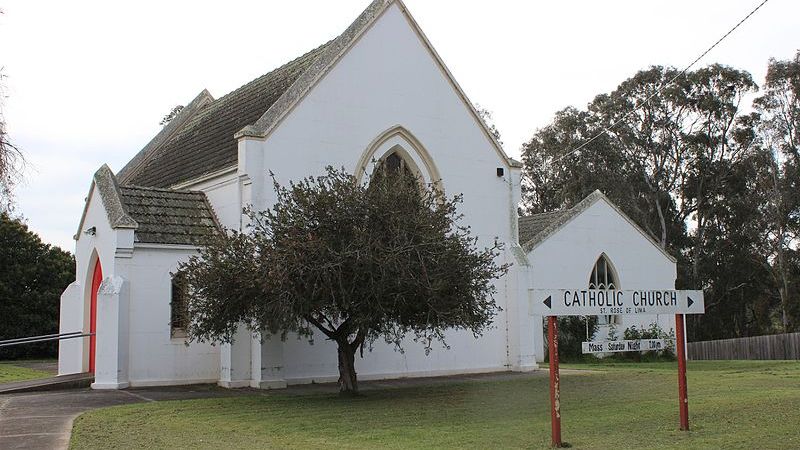
Located at 2 Queen St, Rosedale
The St Rose of Lima Catholic Church was erected in 1874 by William Allen with the first service held in 1875, with an extension later added in 1993.
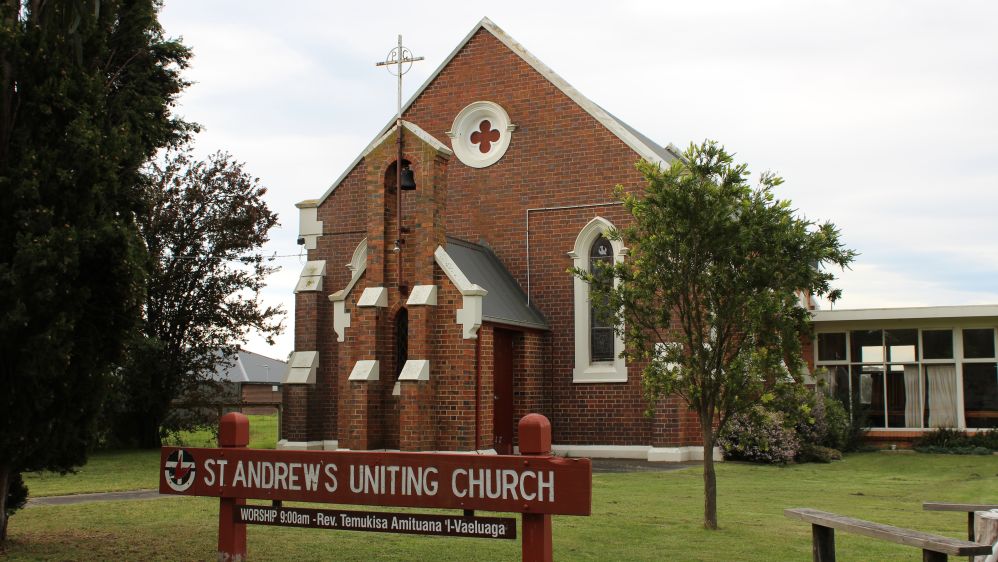
Located at 48-52 Queen St, Rosedale
The Presbyterian Church, formerly used as St Andrew's Uniting Church and now home to the Rosedale Living Waters Family Church. St Andrew's was built in 1869 by Chown and Wynd. The official opening was on 2nd January 1870, with an extension added in 1962.
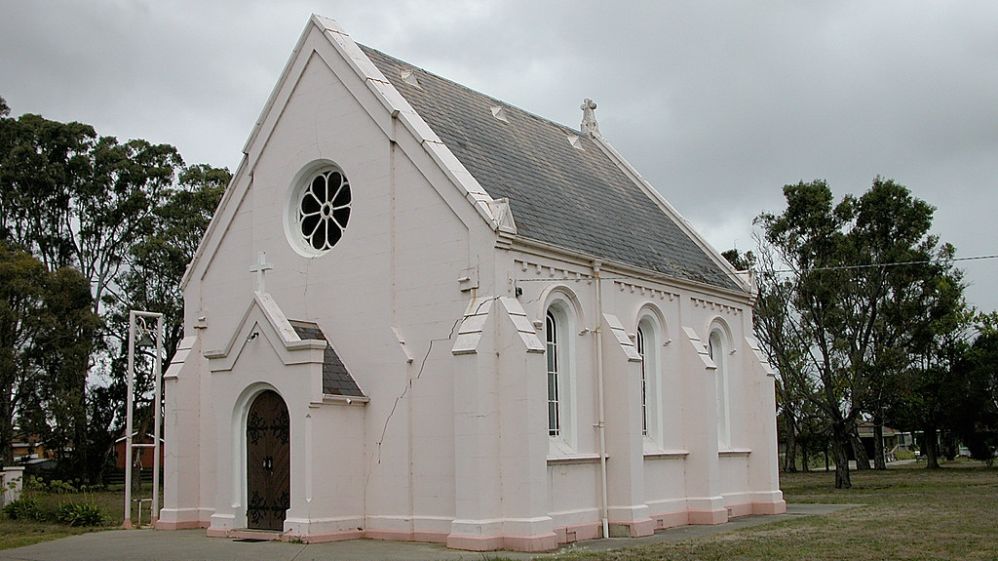
Located at 55-59 Albert St, Rosedale
St Mark's Anglican Church is the oldest Rosedale Church and one of the oldest brick churches in Gippsland. Built by Barry & Sons of Sale in 1866 and opened 1st January 1868.
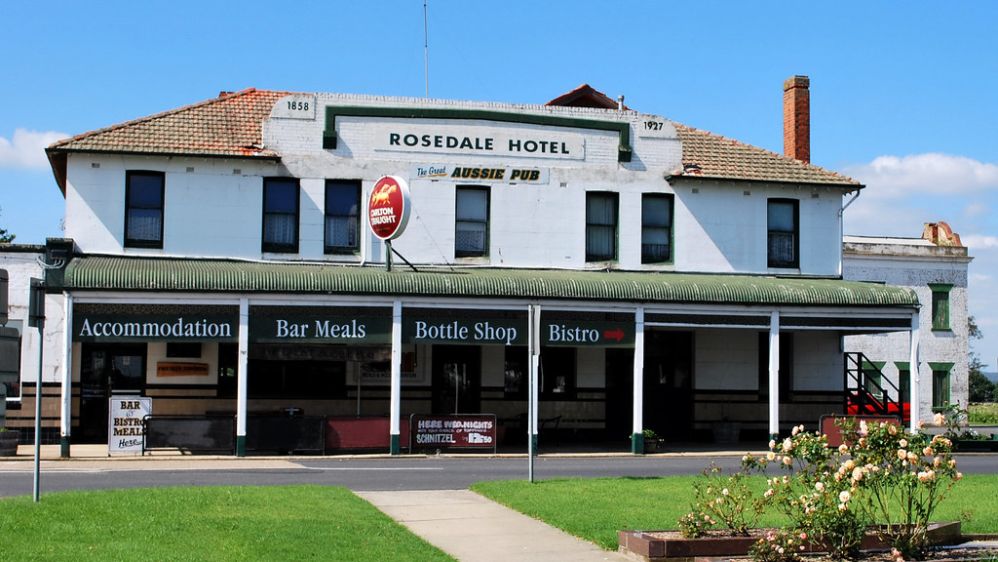
Located at 29-31 Lyons St, Rosedale
Built in 1858 by William Allen for Paul Cansick, the first licensee. The second story was added in 1922. The kitchen and servants quarters were to the rear of the building and are now heritage listed. The stables and loft were removed in 1988, but formed the famous courtyard, acting as a stopping point for the gold escorts travelling from the goldfields to Port Albert.
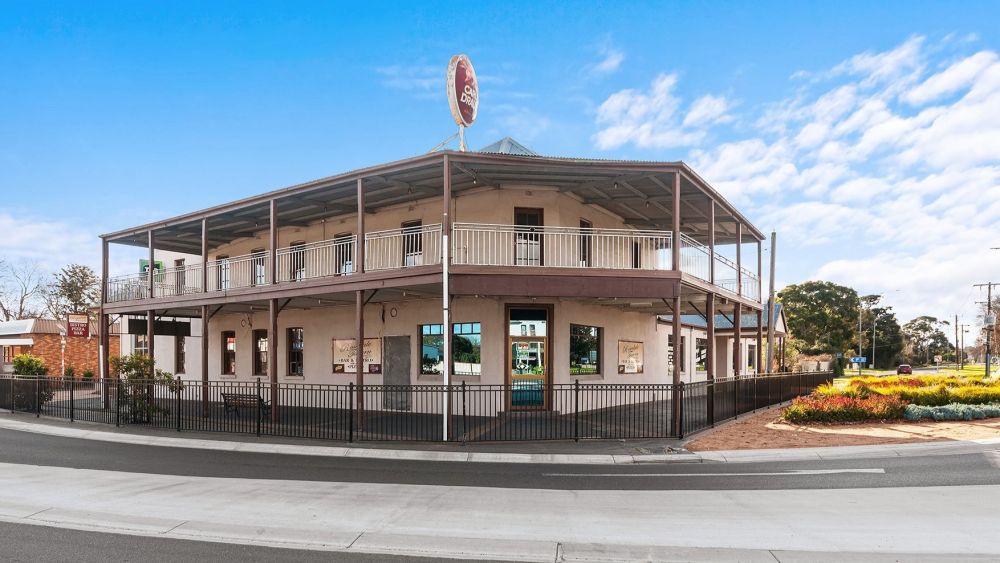
Located at 2 Prince St, Rosedale
Built by Henry Luke in 1860, in 1863, Mr J.T. Robertson established his store here as a grocer. He opened the Royal Hotel on 1st July 1864. In 1870 the name was changed to The Exchange Hotel, the stables were used by Cobb & Co. The hotel was refurbished in 2003 and renamed the Rosedale Tavern.
Located on Prince St, Rosedale
Built in 1882 by John Graham Deakin, rented in 1893 (and later purchased) by the Law Department of Victoria and Rosedale's Court House until 1924. The Masonic Lodge purchased the building and later sold it after amalgamating with the Heyfield Lodge in 1999.
Located in Prince St, Rosedale
Built in 1866 by Henry Luke, becoming the Post and Telegraph Office in 1873, continuing for the next 105 years. The site of this plaque where Luke's Shop stood from where all postal business took place before 1867.
Located at 25 Prince St, Rosedale
This building was erected in 1886, although the Bank of Australasia opened later in February 1973. Rocks for the foundations were collected from the ridge to the north of town. It was designed by Melbourne architect, Henderson and built by George Wynd of Sale. In 1917, due to World War I (1914 - 1918) it became a bank agency because of staff shortages. The bank reopened in 1949 and in 1952 it amalgamated with the Union Bank of Australasia to become the ANZ Bank. It closed in 1996. As a bank it was held up 4 times, the last time in 1975.
Located at 39 Prince St, Rosedale
The Mechanics Institute was built by Fidler Bros of Sale in 1874. George Browne was the architect, with William Allen and Charles Chown. In 1940, an addition of the supper room with William Allen as a designer and overseer. His son, Arthur was the builder. Renovations by the Rosedale Shire Council in 1981 removed the stage, two dressing rooms and exterior stairway at the rear, along with two fireplaces and the interior wall. A lower, new ceiling hides the original decorative ceiling.
Located in Prince St, Rosedale
The Rosedale Common School was built by public subscription. The stone foundation was laid on 22 October 1870 by Mrs Christina King.